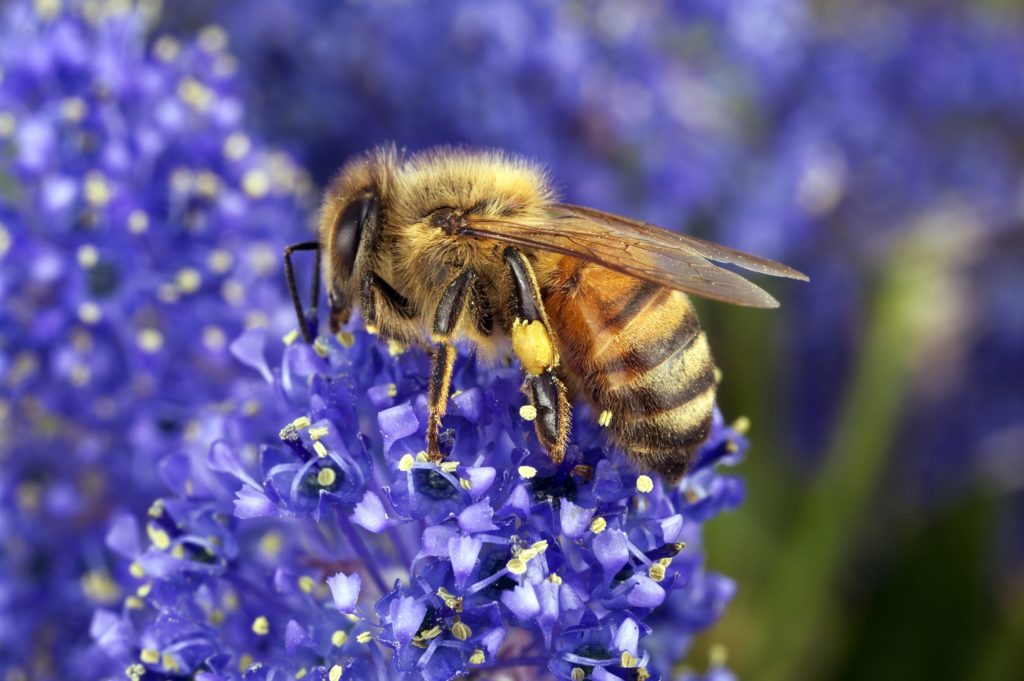
Restoring pollinator populations should be prioritised for long-term effectiveness in forest restoration programmes
According to the World Bank, 1.3 million km2 of forest was lost to human activities between 1990 and 2016, and deforestation rates have been increasing. With the threat of massive biodiversity losses and mounting evidence of the importance of forests in combatting climate change, efforts are being made across the world to slow deforestation and to restore areas of previously deforested land.
The majority of studies on habitat restoration ecology that have been carried out to date focus on short-term challenges, such as plant establishment and early succession in restored areas. In a recent paper published in Ecological Applications, a group of researchers from the University of São Paulo have tackled a longer-term concern – that of the relationship between pollinator species and restored tropical forests.
Pollinator species, including bees, are vital to the survival and reproduction of most plants. A major focus of current pollinator research is the importance of bees to the production of crop plants and the potential impacts that their declining numbers could have on global food security. However, these species are also of critical importance to forest ecosystems, and in this paper the researchers looked at the ways that bees respond to forest restoration efforts.
The study involved field surveys of areas of conserved, disturbed and restored forest as well as anthropogenic wetlands and sugarcane fields in the Brazilian Atlantic rainforest. The researchers surveyed the bees that were present in each habitat type in order to compare the abundance and functional diversity of species present. The surveys were carried out using pan traps and bait traps during peak flowering season. A total of 727 bees of 85 different species were found across the different habitats.
The results of this study indicate that the abundance and diversity of bee communities in restored areas of forest are lower than in forest that has not been lost in the first place, but are higher than in other disturbed habitats. Small- and medium-sized bees that typically nest underground were found to be less affected by the habitat type, and in some cases were recorded to be more abundant in more disturbed areas. Larger species, however, were recorded to respond negatively to habitat change.
The results also allowed the researchers to identify a number of groups of species that play a key role in the pollen-transportation for the most important tree and plant species in remnant forests and restoration plantings.
These findings demonstrate the cyclical nature of the relationships between bees and forests, and emphasise the importance of considering pollinator species when designing and implementing a restoration scheme. In areas where forest is restored, the abundance and diversity of bee species was recorded to be greater, highlighting the value of restoring forests in comparison to habitats like wetlands and plantations. The researchers recommend that strategies for restoring forests include provisions for bee species to ensure that new habitats contain the right nesting resources to support them.
Without bees, fruit, vegetable and nut production would decline dramatically, and there are concerns that the resulting crash in the farming industry across the world would make supporting the current human population impossible. Globally, bee populations are declining at unprecedented rates, thought to be driven by a combination of factors including disease, parasitism, monocultural fields and pesticide use.
This paper demonstrates the importance of including bees in forest restoration strategies, but its message is applicable to all areas of agriculture and ecosystem ecology. Bees are of critical importance to natural ecosystems and the farming industry, and steps must be taken to effectively maintain their populations and the health of the wider habitat.
Read the full article:
Montoya‐Pfeiffer, P. M., Rodrigues, R. R. and Alves dos Santos, I. 2020. Bee pollinator functional responses and functional effects in restored tropical forests. Ecological Applications
To find similar articles, visit CABI’s Forest Science Database and use the search: [(bees OR pollinat*) AND (“forest regeneration” OR “forest recovery”)]
Or see below:
Bee diversity along a forest regeneration gradient in Western Kenya.
Pollen limitation as a main driver of fruiting dynamics in oak populations.
Diversity and habitat use by stingless bees (Apidae) in the Brazilian Atlantic Forest.
Related News & Blogs
On Earth Day, we take a look at climate change and agriculture
Climate change poses a threat to the livelihoods of smallholder farmers, exacerbating existing risks like extreme weather and the migration of crop pests and diseases that threaten food security. Already, the climate crisis is accelerating biodiversity…
22 April 2024




